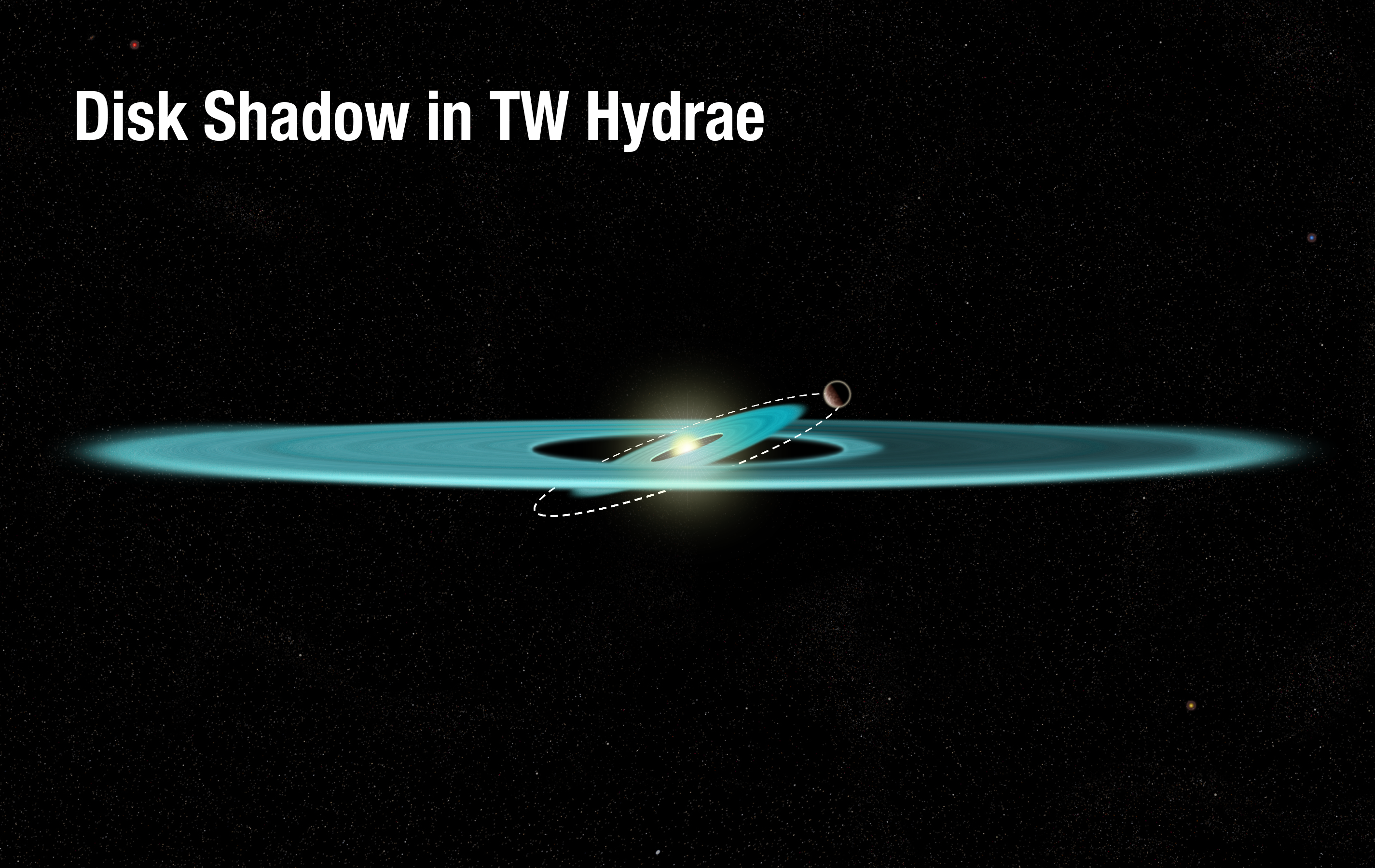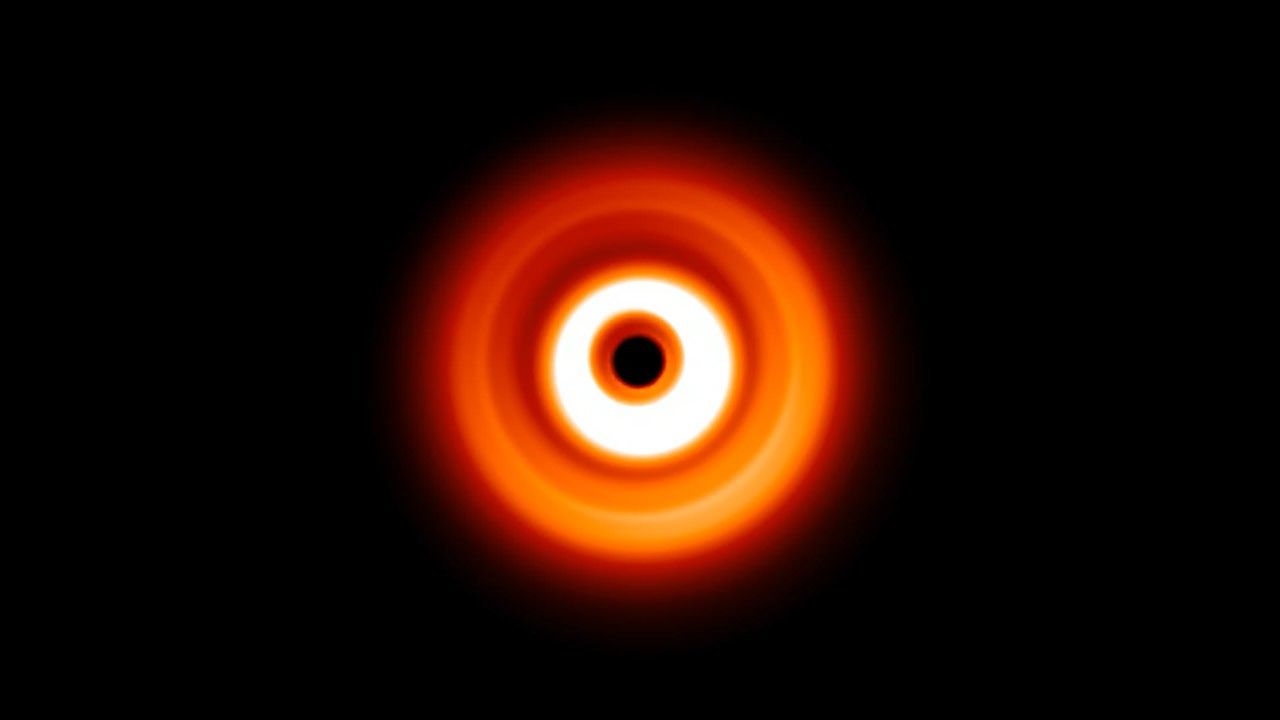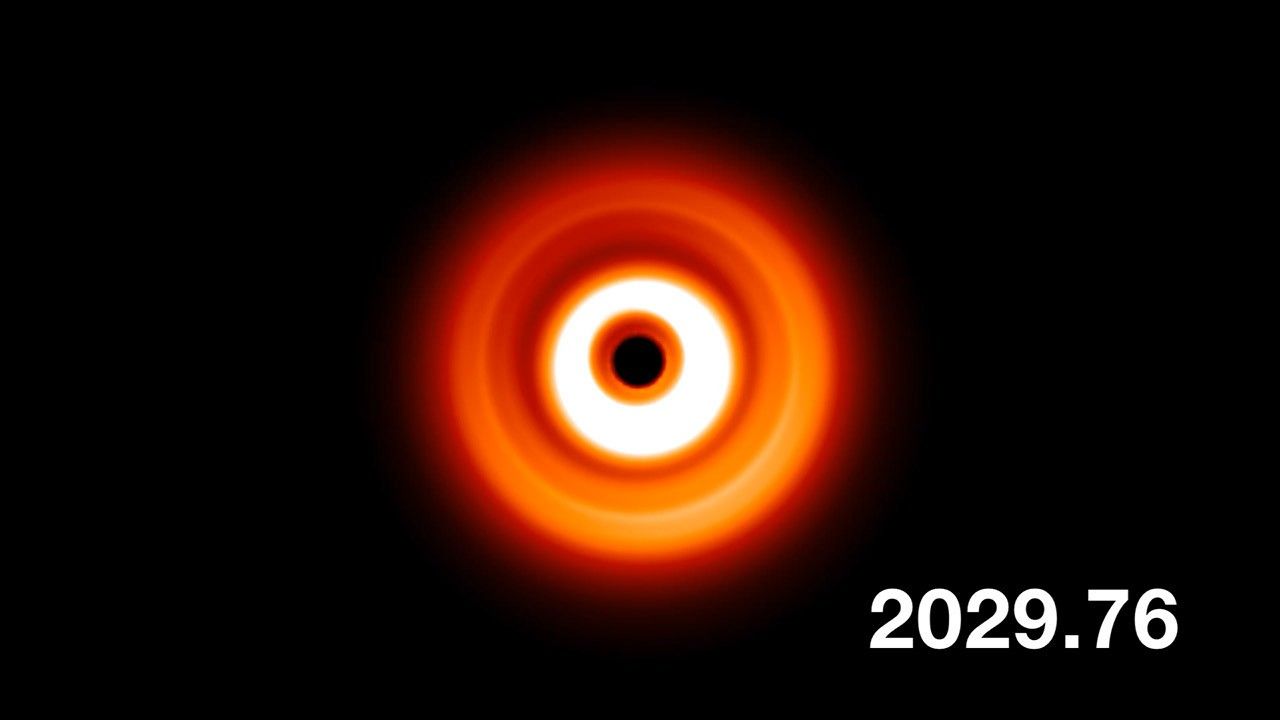1 min read
Shadow on TW Hydrae’s Disk

These images, taken a year apart by NASA's Hubble Space Telescope, reveal a shadow moving counterclockwise around a gas-and-dust disk encircling the young star TW Hydrae.
The two images at the top, taken by the Space Telescope Imaging Spectrograph, show an uneven brightness across the disk.
Through enhanced image processing (images at bottom), the darkening becomes even more apparent. These enhanced images allowed astronomers to determine the reason for the changes in brightness.
The dimmer areas of the disk, at top left, are caused by a shadow spreading across the outer disk. The dotted lines approximate the shadow's coverage. The long arrows show how far the shadow has moved in a year (from 2015-2016), which is roughly 20 degrees.
Based on Hubble archival data, astronomers determined that the shadow completes a rotation around the central star every 16 years. They know the feature is a shadow because dust and gas in the disk do not orbit the star nearly that quickly. So, the feature must not be part of the physical disk.
The shadow may be caused by the gravitational effect of an unseen planet orbiting close to the star. The planet pulls up material from the main disk, creating a warped inner disk. The twisted disk blocks light from the star and casts a shadow onto the disk's outer region.
About the Object
- R.A. PositionR.A. PositionRight ascension – analogous to longitude – is one component of an object's position.11h 01m 51.91s
- Dec. PositionDec. PositionDeclination – analogous to latitude – is one component of an object's position.-34º 42’ 17.0”
- ConstellationConstellationOne of 88 recognized regions of the celestial sphere in which the object appears.Hydra
- DistanceDistanceThe physical distance from Earth to the astronomical object. Distances within our solar system are usually measured in Astronomical Units (AU). Distances between stars are usually measured in light-years. Interstellar distances can also be measured in parsecs.About 180 light-years (54 parsecs). The images are approximately 6 arcseconds, or roughly 400 AU, wide.
About the Data
- Data DescriptionData DescriptionProposal: A description of the observations, their scientific justification, and the links to the data available in the science archive.
Science Team: The astronomers who planned the observations and analyzed the data. "PI" refers to the Principal Investigator.Datasets used for these results are from the HST proposal 13753, John Debes (STScI) P.I. and lead author. - InstrumentInstrumentThe science instrument used to produce the data.HST>STIS/CCD
- Exposure DatesExposure DatesThe date(s) that the telescope made its observations and the total exposure time.May 2015, March 2016
- FiltersFiltersThe camera filters that were used in the science observations.50CCD
- Object NameObject NameA name or catalog number that astronomers use to identify an astronomical object.TW Hydrae
- Object DescriptionObject DescriptionThe type of astronomical object.T Tauri Star
- Release DateJanuary 7, 2017
- Science ReleaseHubble Captures ‘Shadow Play’ Caused by Possible Planet
- Credit

The images were acquired by HST’s STIS CCD instrument using the 50CCD (clear imaging) filter. Color was applied using a colormap assigning a different color to each brightness value.
Related Images & Videos

The Making of a Shadow in TW Hydrae's Disk
This diagram reveals the proposed structure of a gas-and-dust disk surrounding the nearby, young star TW Hydrae. The illustration shows an inner disk that is tilted due to the gravitational influence of an unseen companion, which is orbiting just outside the disk. The tilted...

Shadow on TW Hydrae Disk Visualization
This simulation shows a shadow sweeping around a gas-and-dust disk encircling the young star TW Hydrae. The simulated view is based on an analysis of data taken between 1998 and 2016 by NASA's Hubble Space Telescope. This video also shows what the moving shadow might look like...
Share
Details
Claire Andreoli
NASA’s Goddard Space Flight Center
Greenbelt, Maryland
claire.andreoli@nasa.gov





























